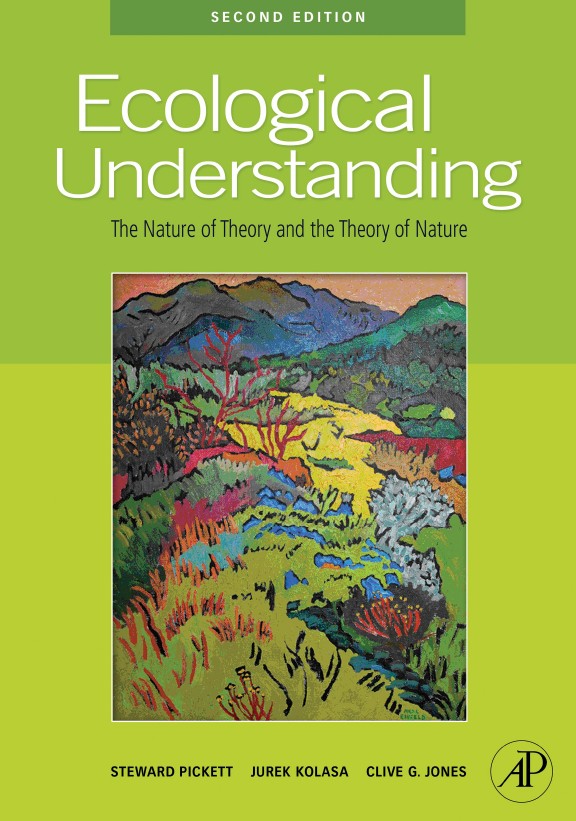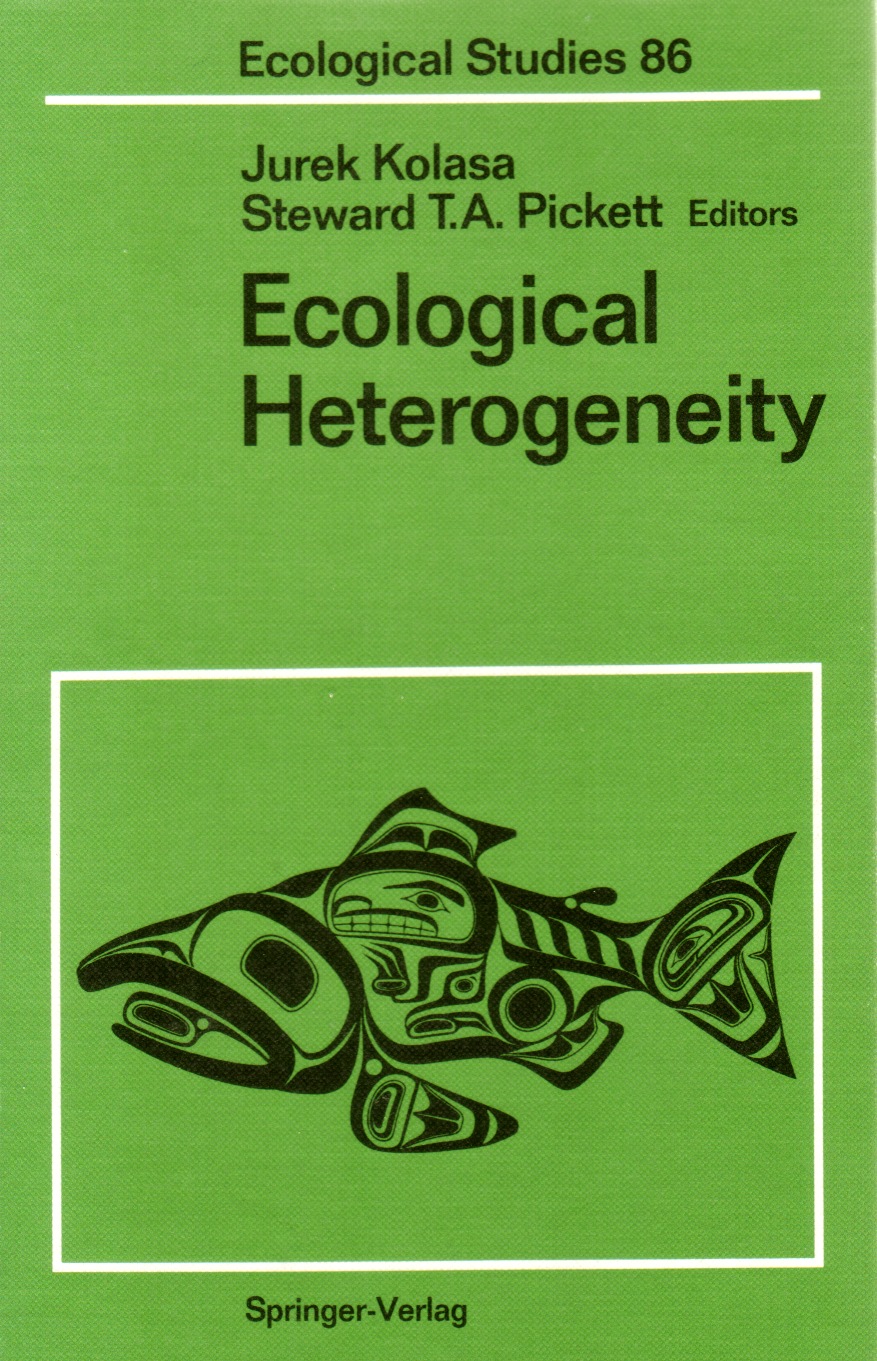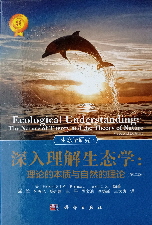
 |
|
|
||||||||||||||
|
||||||||||||||
 |
 |
 |
||||||||||||
|
Most recent on top Schenk, S., Lavender, T.M., and, J. Kolasa (2023). Long-term supratidal rockpool invertebrate community, Discovery Bay, Jamaica. Ecology e4013, https://doi.org/10.1002/ecy.4013 B. Halpern & 30+ co-authors. (2023). Priorities for synthesis in ecology and environmental science. Frontiers in Ecology and Environment 14: e4342, https://doi.org/10.1002/ecs2.4342 Kolasa, J., Brooke N., Shaikh, M. and M. Hammond (2022). Aggregating taxa and the influence of scale: potential concerns for analysis of stability in functional view of communities Ecosphere (in revision) Werba J.A,. Phong A.C. Brar L,, Frempong-Manso A. Vanessa Oware O, and J Kolasa (2022). Interactions between two functionally distinct aquatic invertebrate herbivores complicate ecosystem- and population-level resilience. PeerJ. https://DOI.org/10.7717/peerj.14103 Werba, J.A and J. Kolasa (2022). The challenge of life history traits - a small cladoceran, Ceriodaphnia rigaudi. Community Ecology, https://doi.org/10.1007/s42974-022-00115-5 Hammond M*, Fung P, and J Kolasa. (2023). Synthetic Ecosystems: An emerging opportunity for science and society. Oikos e09816, http://dx.doi.org/10.1111/oik.09816 Pandit SN*, Poesch M, Koirala L, Kolasa J, Rodríguez-Gironés MA, 4 and EC Enders. (2023). Assessing temporal shifts in ecological community nestedness: Are responses of invasive species more idiosyncratic than native species after land-use change? Aquatic Ecology and Biological Invasions (in review).
Abd-Alla, M. E., et al. (2021). "Morphological and population changes of the cockle Cerastoderma glaucum in Lake Qarun, Egypt, may be driven by accelerated environmental deterioration." Journal of Taibah University for Science 15(1): 1068-1077. Hammond M*, Loreau M, De Mazancourt C and J Kolasa. (2020). Disentangling local, metapopulation and cross-community sources of stabilization and asynchrony in metacommunities. Ecosphere e03078.10.1002/ecs2. 11(4): 1-16 Hammond M*, and J Kolasa. (2019). The long and short of biodiversity: Cumulative diversity and its drivers. Diversity. 11: 1-12. Marquez JC*, Kolasa J and L Sciullo*. (2016). Local versus regional processes and the control of community structure. Community Ecology. 17(1): 1-7. Pandit SN*, Kolasa J and Cottenie K. (2016). The role of local and regional processes on population synchrony along the gradients of habitat specialization. Ecosphere e01217. 7(5): 1-11. Hammond MP *, and J Kolasa. (2016). Predicting the occurrence of persistent hotspots in ecosystem variables. Oikos. 125(6): 849-860 Chaffin BC, Garmestani AS, Angeler DG, Hermann DL, Stow CA, Nyström M, Sendzimir J, Hopton ME, Kolasa J, Allen CR. (2016). Biological invasions, ecological resilience and adaptive governance. Journal of Environmental Management. doi:10.1016/j.jenvma Hammond, M.P. and J. Kolasa. 2014. Spatial Variation as a Tool for Inferring Temporal Variation and Diagnosing Types of Mechanisms in Ecosystems. PLoS ONE 9 (2): 1-11. e89245 Kolasa, J. 2014. Ecological boundaries: a derivative of ecological entities. Web Ecology 14, 27–37, Pandit, S.N., J. Kolasa, and K. Cottenie. 2013. Species richness and environmental fluctuation affect population synchrony in a metacommunity. Oecologia 171 (1), 237-247. Márquez, J.C., J. Kolasa. 2013. Local and regional processes in community assembly. PlosOne 8: e54580 Kolasa, J., Allen, C.R., , J. Sendzimir and C. Stow. 2012. Predictions and retrodictions of the hierarchical representation of habitat in heterogeneous environments. Ecological Modelling 245 (2012) 199– 207 Pandit, S.N,, and J. Kolasa. 2012. Opposite effects of environmental variability and species richness on temporal turnover of species in a complex habitat mosaic. Hydrobiologia 685:145-154, DOI 10.1007/s10750-011-0871-5 Kolasa, J., Manne, L.M., and S.N. Pandit. 2011. Species–area relationships arise from interaction of habitat heterogeneity and species pool. Hydrobiologia DOI 10.1007/s10750-011-0846-6 Lott J.N.A., Kolasa, J., Batten, G.D. and L.C. Campbell. 2011. The critical role of phosphorus in world production of cerealgrains and legume seeds. Food Security 3:451–462. Anand M., Gonzalez, A., Guichard, F, Kolasa, J and L.Parrott. 2010. Ecological systems as complex systems: Challenges for an emerging science. Diversity 2, 395-410; doi:10.3390/d203039591 Wambold, L.J., Chan, D.O., Therriault, T.W. and J Kolasa. 2011. Abiotic factors controlling species richness, diversity, and abundance in the bromeliad Hohenbergia polycephala (Bromeliaceae). Ecotropica 17: 91–101. Pandit, S.N,, Hayward, A., de Leeuw, J., and J. Kolasa. 2010. Does plot size affect the performance of GIS-based species distribution models? Journal of Geographical Systems DOI 10.1007/s10109-010-0106-8 Pandit, S.N., Kolasa, J., and K. Cottenie. 2009. Contrasts between habitat generalists and specialists: en empirical extension to the basic metacommunity framework. Ecology 90(8): 2253–2262. Hayward, A., J. Kolasa, and J.R. Stone. 2009. The scale dependence of density-body mass allometry: Statistical artefact or biological explanation? Ecological Complexity . doi:10.1016/j.ecocom.2009.08.005 Lott, J., Bojarski, M., Kolasa, J., Batten, G.D., and L. Campbell. 2009. A review of the phosphorus content of dry cereal and legume crops of the world. International Journal of Agricultural Resources, Governance and Ecology (in press) Hayward, A., Khalid, M., and J. Kolasa. 2009. Population energy use scales positively with body size in natural aquatic microcosms. Global Ecology and Biodiversity 18: 553–562 Romanuk, T.N., Vogt, R.J., and J. Kolasa. 2009. Ecological realism and mechanisms by which diversity begets stability. Oikos 118: 819-828, Azeria E.T., and J. Kolasa. 2008. Nestedness, niche metrics and temporal dynamics of a metacommunity in a dynamic natural model system. Oikos, 117: 1006-1019 Pickett, S.T.A., Kolasa, J, and C.G. Jones 2007. Ecological Understanding, Academic Press (book) Romanuk, T.N., Beisner B.E., Martinez N.D., and J. Kolasa. 2006. Non-omnivorous generality promotes population stability. Biology Letters 2, 374–377. Romanuk, T.N., Vogt, R.J., and J. Kolasa. 2006. Nutrient enrichment weakens the stabilizing effect of species richness. Oikos 114: 291302, 2006 Vogt, R., Romanuk, T.N., and J. Kolasa. 2006. Species richness-variability relationships in multi-trophic aquatic microcosms. Oikos 113: 55/66, 2006 Kolasa, J. 2006. A Community ecology perspective on variability in complex systems: The effects of hierarchy and integration. Ecological Complexity 3: 71-79. [DOI link: http://dx.doi.org/10.1016/j.ecocom.2005.08.001 Beisner B.E., J. Hovius, A. Hayward, J. Kolasa and T.N. Romanuk1 2006. Environmental productivity and biodiversity effects on invertebrate community invasibility. Biological Invasions 8:655-664. Kolasa, J. 2005. Complexity, system integration, and susceptibility to change: biodiversity connection. Ecological Complexity 2 (2005) 431–442 Kolasa, J. and T.N. Romanuk. 2005. Assembly of unequals in the unequal world of a rock pool metacommunity. In (M. Holyoak, M. A. Leibold and R. D. Holt), Metacommunities: spatial dynamics and ecological communities. University of Chicago Press. (please email for reprint) Romanuk, T.N. and Kolasa, J. 2005. Resource limitation, biodiversity, and competitive effects interact to determine the invasibility of rock pool microcosms. Biological Invasions, 7, 711-722 Fuller, M.M., Romanuk, T.N., and J. Kolasa. 2005. Effects of predation and variation in species relative abundance on the parameters of neutral models. Community Ecology 6 (2): 229-240 Kolasa J. and S.T.A. Pickett. 2005. Changing academic perspectives of ecology – a view from within. In (M. Mappin and E. Johnson, eds), Environmental Education or Advocacy: Perspectives of Ecology & Education in Environmental Education. Cambridge University Press. Pp. 50-71 Romanuk, T.N. and J. Kolasa. 2004. Population variability is lower in diverse rock pools when the obscuring effects of local processes are removed. Ecoscience 11 (4):455-462 Srivastava, D., J. Kolasa, J. Bengtsson, A. Gonzalez, S. P. Lawler, T. E. Miller, P. Munguia, T. Romanuk, D. C. Schneider and M. K. Trzcinski. 2004. Are natural microcosms useful model systems for ecology? 2004. Trends in Ecology and Evolution 19:379-384 Kolasa, J. and B-L., Li. 2003. Removing the confounding effect of habitat specialization reveals the stabilizing contribution of diversity to species variability. Proc. Roy. Acad. Sci. London (Biology Letters) 270: 198-201 Milani D., Reynoldson, T.B, Borgmann U., and J. Kolasa. 2003. The relative sensitivity of four benthic invertebrates to metals in spiked sediment exposures and application to contaminated field sediment. Environmental Toxicology and Chemistry Journal 22: 845-854. Romanuk, T.N. and J. Kolasa. 2002. Abundance and species richness in natural aquatic microcosms: a test and refinement of the Niche-Limitation Hypothesis. Community Ecology 3: 87-94 Romanuk, T. and J. Kolasa. 2002. Environmental variability alters the relationship between richness and variability of community abundances in aquatic rock pool microcosms. Ecoscience 9: 55-62 Romanuk, T. and J. Kolasa. 2001. Simplifying the complexity of diversity dynamics. Ecoscience 8: 259-263. Therriault, T.W. and J. Kolasa. 2001. Desiccation frequency reduces species diversity and predictability of community structure in coastal rock pools. Israel J. Zool. 47: 477-489 Therriault T. and J. Kolasa. 2000. Explicit links among physical stress, habitat heterogeneity and biodiversity. Oikos 89: 387-391 Therriault, T.W. and J. Kolasa. 2000. Patterns of community variability depend on habitat variability and habitat generalists in natural aquatic microcosms. Community Ecology 1: 195-203. Edinger E. N., J. Kolasa and M.J. Risk. 2000. Biogeographic variation in coral species diversity on coral reefs in three regions of Indonesia. Diversity and Distributions (former Biodiversity Letters) 6: 113-128 Therriault T. and J. Kolasa. 1999. Physical determinants of richness, diversity, evenness and abundance in natural aquatic microcosms. Hydrobiologia 412: 123-130 Kolasa, J. and N. Waltho. 1998. A hierarchical view of habitat and its relationship to species abundance. In D.L. Peterson and V. T.Parker , eds. Ecological Scale. Columbia University Press. pp. 55-76. Kolasa J., C.L. Hewitt, and J.A. Drake. 1998. The Rapoport’s rule: an explanation or a byproduct of the latitudinal gradient in species richness? Biodiversity and Conservation 7: 1447-1455. Kolasa J., and J.A. Drake. 1998. Abundance and range relationship in a fragmented landscape of natural microcosms. Coenoses 13 (2):79-88. Waltho, N. and J. Kolasa. 1996. Stochastic determinants of assemblage patterns in coral reef fishes: a quantification by means of two models. Env. Biol. Fishes 47:255-267. Kolasa J., Drake J.A., Huxel G.R. and C.L. Hewitt. 1996. Hierarchy underlies patterns of variability in species inhabiting natural microcosms. Oikos 77:259-266. Kolasa J. 1996. Nestedness and discontinuities in species range size distributions. Trends Ecol. Evol. 11 (10):432. Kolasa J. and M. Zalewski. 1995. Notes on ecotone attributes and functions. Hydrobiologia 303:1-750. Kolasa, J. and L. Weber. 1995. Phytoplankton variability in water cells of different sizes: implications for ecotone dynamics. Hydrobiologia 303:61-67 Waltho, N. and J. Kolasa. 1994. Organization of instabilities in multispecies systems: a test of hierarchy theory. Proc. Natl. Acad. Sci., USA 91: 1682-1685 Kolasa, J. and S.T.A. Pickett. 1992. Ecosystem stress and health: an expansion of the conceptual basis. J. Aquat. Ecosyst. Health 1: 7-13. Danzmann, R.G., D.S. MacLennan, D.G. Hector, P.D.N. Hebert, and J. Kolasa. 1992. Community structure of Lake St. Clair fishes based upon catchability studies from 1977 to 1988. J. Great Lakes Res. 18: 11-21. Kolasa, J. and S.T.A. Pickett. 1991. Ecological Heterogeneity (editors). Springer. (book) Kolasa J, and C.D. Rollo. 1991. Heterogeneity of heterogeneity. In Ecological Heterogeneity (Kolasa J and S.T.A. Pickett, editors). Springer. Pickett S.T.A., J. Kolasa, J.J. Armesto and S.L. Collins. 1989. The ecological disturbance and its expression at various hierarchical levels. Oikos 54: 129-136 Pickett, S.T.A. and J. Kolasa. 1989. The role and use of theory in vegetation science. Vegetatio 83: 7-15 Kolasa, J. and S.T.A. Pickett. 1989. Ecological systems and the concept of biological organization. Proc. Natl. Acad. Sci. 86: 8837-8841 Kolasa, J. 1989. Ecological systems in hierarchical perspective: breaks in the community structure and some other consequences. Ecology 70: 36-47. Kolasa, J. and D. Strayer. 1988. Species abundance patterns: a comparison of two hierarchical models. Oikos 53: 235-241
Turbellaria Kolasa, J. 2009. Turbellariomorpha - Wirkoksztaltne. Chapter in Cz. Blaszak (ed.).
Kolasa, J. 2000. The biology and ecology of lotic microturbellarians. Freshwat. Biol. 44: 5-14. Therriault T.W. and J. Kolasa. 1999. New species and records of microturbellarians from coastal rock pools of Jamaica, West Indies. Arch. f. Hydrobiologie 144 (3):371-381 Kolasa, J. and A.P. Mead. Freshwater macrostomid Turbellaria of Papua New Guinea. Invert. Taxon. (in revision, tentatively accepted). Gregory, T.R., P.D.N. Hebert, and J. Kolasa (2000). Evolutionary implications of the relationship between genome size and body size in flatworms and copepods. Heredity 84: 201-208. Kolasa, J. and S.S. Schwartz. 1988. Predatory flatworms (Mesostoma, Turbellaria) from Australia. Zoologica Scripta 17:329-335.
|
| [J K home] [Research] [Teaching] [Hierarchy] [Grad openings] |